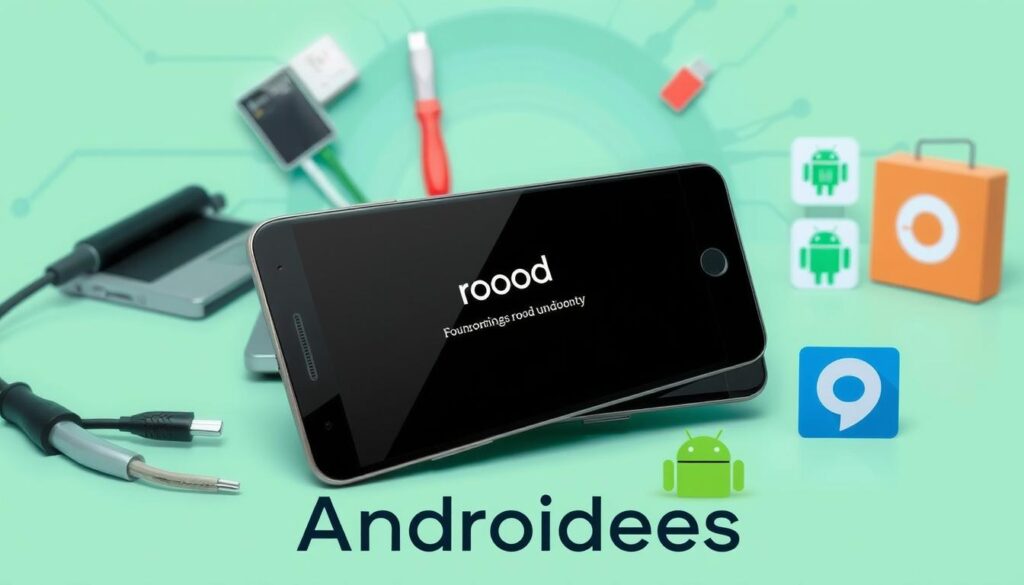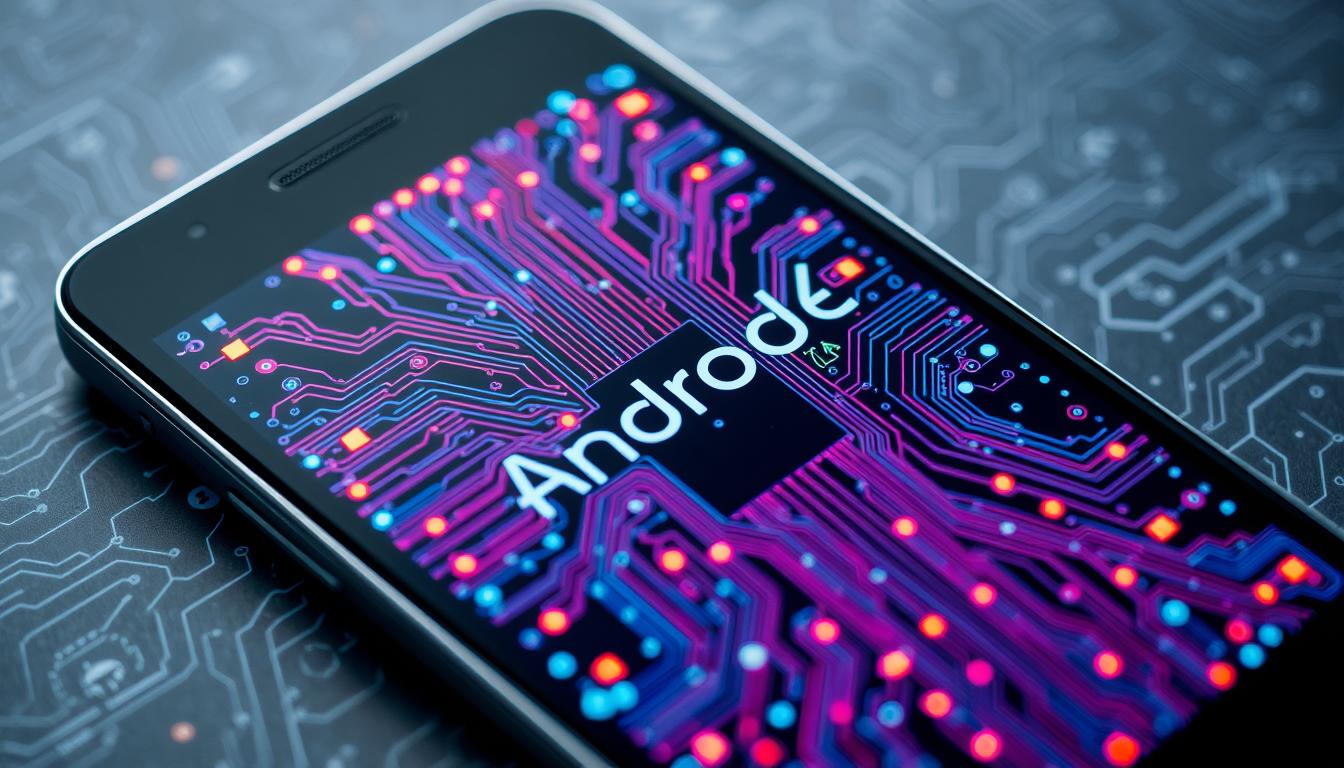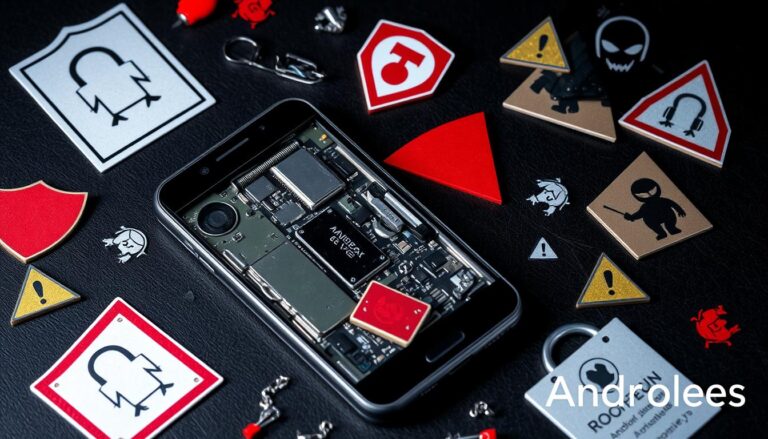Did you know it is estimated that more than 75% of Android users have root access? It’s true that rooting offers very appealing customization possibilities but also comes with its share of risks. If you belong to the group of Android users who past rooted their phones, do not fret because we have got fixes for your rooted Android device.
Having issues with boot loops, app crashing or phone appears to be bricked? Well, don’t worry about it at all. Master the art of safe uninstall as well as restoring custom firmware so your smartphone is again in your control. Yes, you are again able to resurrect your rooted phone, breathe life into your phone and turn it on.
Understand the Risks of Rooting
Rooting your Android phone can enhance your control and accessibility options. However, there are some drawbacks associated with it. Therefore, you should think about the following:
- Ruins your warranty: Most probably it is going to term as breach of warranty with the manufacturer. Resulting in you not getting assistance whenever necessary.
- Weak Security: The ability to root your device increases your chances of being threatened. In essence, all preventive materials that ensure the security of the information are removed.
- Insecure Clientele: Whenever the device is turned on, the device tends to have unsatisfactory ordered apps that do not meet the required standards. Making it severely difficult for the device to function as desired.
- Voice in your head: Devices that do not function as intended are permanently rooted. Making it possible to lose the orientation of the mobile phone device.
These factors of rooting, risks associated with rooting, effects of rooting, and disadvantages of rooting are significant to consider before you get started. Hence, consider the risk downside to the benefits that it provides. Consider the rooting issues, rooting dilemmas, rooting concerns, and rooting device stability to ensure making the best choice for your Android.
| Potential Risks | Description |
|---|---|
| Warranty Void | Rooting your device will likely void the manufacturer’s warranty, leaving you responsible for any issues that may arise. |
| Security Vulnerabilities | Rooting exposes your device to security risks, as it removes built-in safeguards that protect your data and system. |
| System Instability | Rooting can lead to system crashes, app incompatibilities, and other issues that may impact the overall stability of your device. |
| Bricking the Device | Improper rooting or modifications can permanently damage your device, rendering it unusable. |
Troubleshoot Common Issues
You may come across issues like bootloops, soft-brick, crashing of apps, and quite a lot of instability as well if you own a rooted Android device. Luckily, there are a few steps that you can try in order to get all of these problems out of the way. This would allow your device to run without any hitches once again.
Bootloop and Soft Brick
Stick with us now because a bootloop is where a device restarts, one too many times however the OS does not load up. A soft brick tends to make one’s device, unresponsive and or unable to boot altogether. And these problems can often arise from incorrect flashes of the wrong ROMs, kernel mismatches, or just other such modifications.
Now, in order to troubleshoot and un-brick Android, we will touch upon some basics. If you are looking to fix a bootloop or a soft brick then consider the following tips.
1.Boot the phone into recovery mode and initiate a factory reset or just wipe the cache.
2.Flashing the stock ROM or a compatible custom ROM is another option to resolve issues with the rooted android phone.
3.In the event that the usual efforts achieved no results, you can take more extreme measures and use a firmware flash tool.
App Crashes and Instability
The disadvantage of rooting is that applications may cease to function properly or the device may become unstable. This may be due to applications that do not match the requirements, kernel problems, or some tweaks that are harassed by the device’s hardware or software.
This could occur due to an unintentional malfunction of the device that has undergone rooting. In order to bring asecurity enhancement, take the following measures:
- Identify and remove any modules or apps responsible for malfunctioning.
- Search and install the latest versions regarding your custom ROM or kernel.
- Recover previous settings in form of backups that are known to be stable.
Rooting devices makes it easier to respond to issues such as a bootloop on rooted phone, soft brick on rooted device, application or android instability or crashes. Today, if you wish to deal with problems involving a rooted device, keep in mind that dealing with issues of a rooted device takes a lot of time and in order to address the issue, a decent excavation ought to be taken.
Unroot Your Android Device
If you have rooted your Android device, you have likely enjoyed several advantages which added to its efficiency and functionality. However, in case you have decided rooting is no longer for you, or possibly retargeting your Android device for your organization’s requirements , then the time now is to ‘unroot’ your Android device. This particular action allows you to regain stability on your device, enhance its performance, and most importantly, address any security vulnerability. To this end, there are several methods available which can help you effectively and safely unroot your Android phone or tablet. These include:
1.Using an automatic unrooting tool: Another approach to unrooting your device is by downloading unrooting applications which target certain types of engaging features including rooting. You need to ensure you have the right application which can support device rooting and connects the device to the software.
2.Unrooting without any devices: This approach can also be referred to as software rooting whereby root access on the Android device firmware is removed and the device is reverted back to its original state. It is important to note that unrooting constitutes no access to any rooting software at any given time.
3.Factory resetting: During flashing of the device, mobile Android users could potentially opt to completely unroot their mobile device allowing it to return to its original state. However, one important note to consider is that users will lose all mobile data after the hard reset of the mobile enabled Android system.
Any method you prefer, ensure to adhere to the guide and make use of the appropriate options before unrooting your Android device. This way, you will prevent and undo the rooting and its changes so that your device functions normally after the process.

| Unroot Method | Difficulty Level | Pros | Cons |
|---|---|---|---|
| One-click Unroot Tool | Easy |
|
|
| Manual Unroot | Moderate |
|
|
| Factory Reset | Easy |
|
|
Restore Stock Firmware
It’s wonderful that you’ve rooted the Android device however if you wish to get back to the stock firmware that is also possible. In most situations, restoring or flashing stock ROM is sufficient to fix the issues your device faces. It also configures the device back to its original configuration.
Download and Install Stock ROM With the help of the proper stock for your Android device, the installation becomes simpler. You could do a Google query saying “stock firmware for [add your device model here]” or “stock ROM for [add the model on your device here].” When you’ve completed downloading the file, follow the steps provided in order to install the stock ROM onto your device.
Reset to Factory Settings
After flashing the stock ROM onto your device, it would be wise to factory reset your device. This step would ensure that any signs of the rooted software would be eliminated. Hence, the device now would be run around the stock or original Android OS in this case. In order to reset go to settings> find Reset or Factory Reset and follow the prompt provided.
Now in order to fully restore the device back to its state after rooting the issues can be easily resolved by restoring the stock firmware and doing a reset on the device. Your Android Smartphone or Tablet has now primarily returned back to when you purchased it. This works particularly well for troubleshooting your device or if you want to prepare your device for resale or a hand over.

Repair Bricked Phone
Androdi’s brick issue isn’t a tough nut to crack. Bootloops, faulty bricks along with a variety of the issues can now be dealt with. The solutions are simple, so stay tuned and we will help you out.
Utilize Firmware Flashing Tools
Boot up Android and proceed to locate Groundbreaking Firmware flashing tools. This is a crucial step, as this enables you to place your custom ROM on the phone. Let’s get straight into the tips:
- ADB and Fastboot
- Xiaomi Mi Flash Tool for Xiaomi phones
- Odin for Samsung devices
- Flashify for Nexus and Pixel devices
Once you pick the appropriate tool for your phone. There is a solid chance to recover your device.
Get Professional Help
Let a Pro handle it if you think you will be able to do it alone, and the tools will be sufficient in dealing with the issue. The experts will sort out whatever the issues are with your hardware, or if necessary, proceed to replace the hardware.
Be very careful while handling the bricked device. Use tools which can fix the phone or seek professional help. In this way you will be able to recover your device as good as new.
Restoring Root Access for a User’s Device
If you have concluded that rooting is the best solution for your Android, there is a way to do it while reducing the risks. By rooting with the trusted root methods, you are also able to use your device again.
To go about this the rerooting stage first begins with picking a reliable root solution which suits ones android and its firmware version. In this way one can be able safely root their devices without running into problems such as bootloops or soft bricks.
If you have lost your root access chances are that you are looking out for root methods, and tools, for your device. Do not use unapproved, unsupported, or unauthorized methods. They have a chance of running the devices useless in terms of stability and security. Use the modding solution’s provided by well known communities centered on android or from the device’s manufacturer.
FAQ
What can I do about my rooted device with bootloops or soft bricks?
How can I unroot my Android device and make it a regular unrooted Android again?
What are the risks and disadvantages of rooting my Android device?
What must I do inorder to flash the stock firmware on my rooted Android device?
What should I do if my rooted device cannot be used all the way through to the end or the device is said to be completely “bricked”?
What are some of the ways I can re-access root on my Android device in a safe way?

I’m a writer at Android Authority and Androidees with a keen focus on current news, wearables, how-to guides, and evergreen content.




